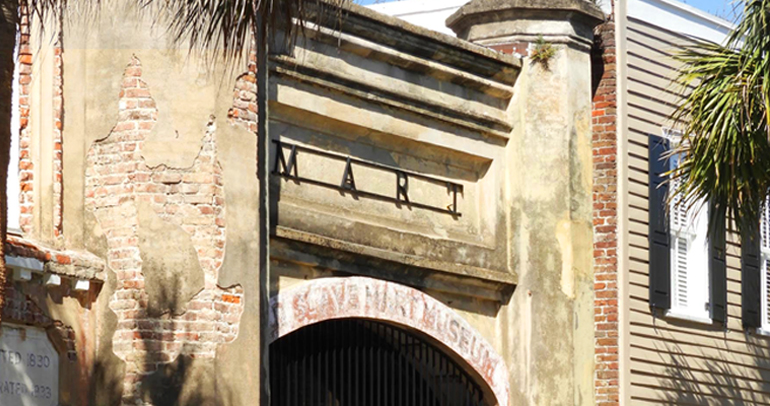

She realized she would have to rehab the structure totally to get a buyer. Realtor-preservationist Susan Frost advertised it in December of 1936 for $2,500, but had no takers. At the end of 1927 it became vacant and remained so until photographer Gerald Coventry bought it in 1934 to serve as a studio. The odd gothic building was pointed out in subsequent decades as a historic site, but was always in private hands. The auction block of 6 Chalmers had been extracted by abolitionist Wendell Phillips in Spring of 1865 and displayed in tours of New England cities as a relic of the overthrow of the slave regime.

was the one surviving building in Charleston where slave auctions were known to have been performed in a hall (most took place outside on the northern side of the Customs House). But the offerings of “Slave Recipes, Inc.” - the culinary business arm of the Old Slave Mart Museum - were expressions of a more confused time in the Lowcountry’s efforts at historical reclamation. Recent news stories of classic African American dishes being served at the newly opened National Museum of African American History and Culture perhaps have made foodways an appropriate form of cultural expression to be memorialized in a history museum. Incidentally, there was - in the 1940s - a previous attempt to revive these candies by the kitchen associated with the Old Slave Mart Museum in Charleston. J.” Dennis have been exploring the restoration of these iconic sweets. Now that the Carolina Gold Rice Foundation and Clemson University have restored the peanuts used in these traditional candies to cultivation, and have brought back the purple ribbon sugar cane that made the molasses used in both monkey meat (a ball of coconut meat and molasses) and groundnut cakes (parched peanuts incorporated to a patty of molasses, brown sugar, butter, and lemon rind), African-American chefs such as Valerie Erwin and Benjamin “B. After that, the city’s most famous African-American street food ceased to be available. The last recorded event where the treats were sold by the old vendors was at a Decemconcert of the Plantation Melody Singers at Charleston High School. One aged seller, “Mauma Chloe,” who had sold her candies on Hasell Street for a quarter of a century, had a virtual monopoly on these festival and theater sales. For a dozen years afterwards the street candies had an afterlife sold during the intermission of theatrical performances and public celebrations occurring in closed spaces. No longer were the fly whisks used by the vendors deemed sufficiently effective against the threat of contamination. The rule brought about the end of the street sales of the city’s famous candies - Groundnut Cakes, Benne Cakes, Monkey Meat, and Gungers - laid out on trays by black women stationed at street corners. In 1909 Charleston enacted a sanitation regulation popularly known as the “Fly Ordinance” that required all food items sold in the open air to be covered to prevent possible contamination from house flies.


 0 kommentar(er)
0 kommentar(er)
